How to Edit a Journal Entry in QuickBooks Desktop
Editing journal entries in QuickBooks Desktop can be time-consuming, especially when dealing with multiple entries or correcting past data.
But what if there were a faster, error-free way to do it?
That’s where SaasAnt Transactions Desktop steps in. Whether it’s a wrong date, account, or amount, SaasAnt lets you edit and submit journal entry changes straight into QuickBooks Desktop with just a few clicks. This blog walks you through a step-by-step guide on how to edit journal entries in QuickBooks Desktop using SaasAnt Transactions.
After completing a quarterly review, you may find that some journal entries in QuickBooks Desktop have been posted incorrectly. Instead of correcting each entry individually, you can streamline the process by exporting your journal entries to Excel or CSV. Once exported, you can make the necessary changes in the spreadsheet. Afterward, you can import the updated entries back into QuickBooks using SaasAnt Transactions Desktop.
This blog is particularly beneficial for accountants, bookkeepers, and finance teams who handle large volumes of transactions, as it enhances both accuracy and efficiency in managing financial records.
Contents
How to Edit Journal Entry in QuickBooks Desktop: Step-By-Step Guide
Wrap Up
Frequently Asked Questions
How to Edit Journal Entry in QuickBooks Desktop: Step-By-Step Guide
Follow the steps below to edit a Journal Entry in QuickBooks Desktop using SaasAnt Transactions Desktop.
Step 1: Install and Connect SaasAnt Transactions
Download the latest SaaSAnt Transactions Desktop version.
Run SaasAntTransactions-Setup.exe as an administrator.
Accept the license agreement and complete the installation.
Open the app, go to Subscription > Register.
Enter the license key from your confirmation email.
Keep your internet connection active.
Step 2: Launch SaasAnt Transactions Desktop
Start by opening the SaasAnt Transactions Desktop app on your system.
Make sure QuickBooks Desktop is open and connected to your company file before you continue.
Step 3: Connect to QuickBooks Desktop
To access the Journal Entries, you need to connect the SaasAnt Transactions Desktop with QuickBooks Desktop. Here's how:
Go to the ‘File’ menu in the top-left corner of SaasAnt Transactions Desktop.
Click ‘Connect to QuickBooks’ from the dropdown.
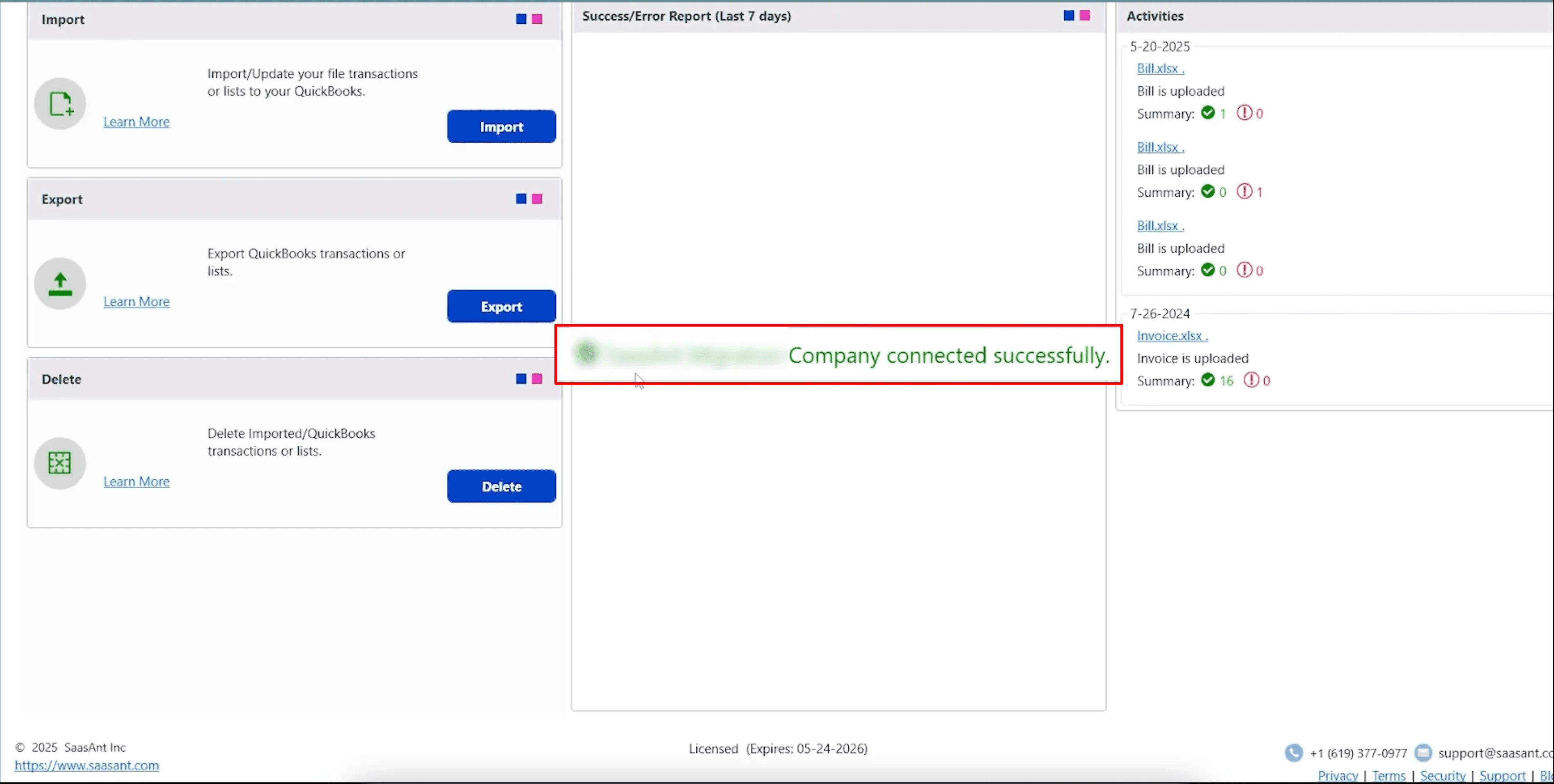
Step 4: Open SaasAnt Transactions
On the SaasAnt dashboard:
On the top left side of the SaasAnt Transactions dashboard, you can see the menu bar with various options.
Select “Edit,” and select “Import” under the edit dropdown.
The Dashboard appears as shown in the image below.
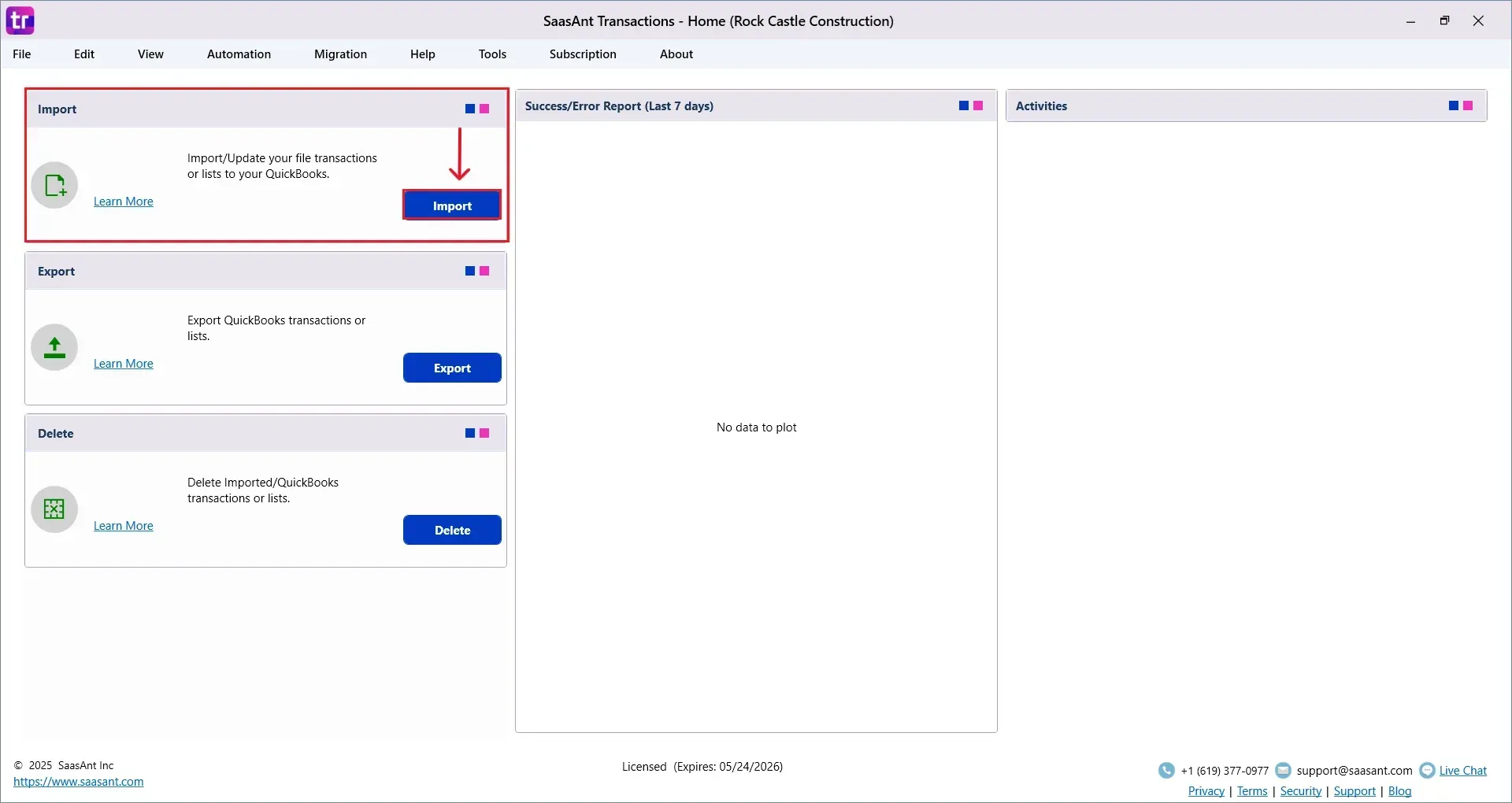
Select “Journal Entry” from the SaasAnt Transaction Type dropdown and upload your Excel or CSV file.
Select “SaasAnt Default Mapping” under the Saved Mapping dropdown.
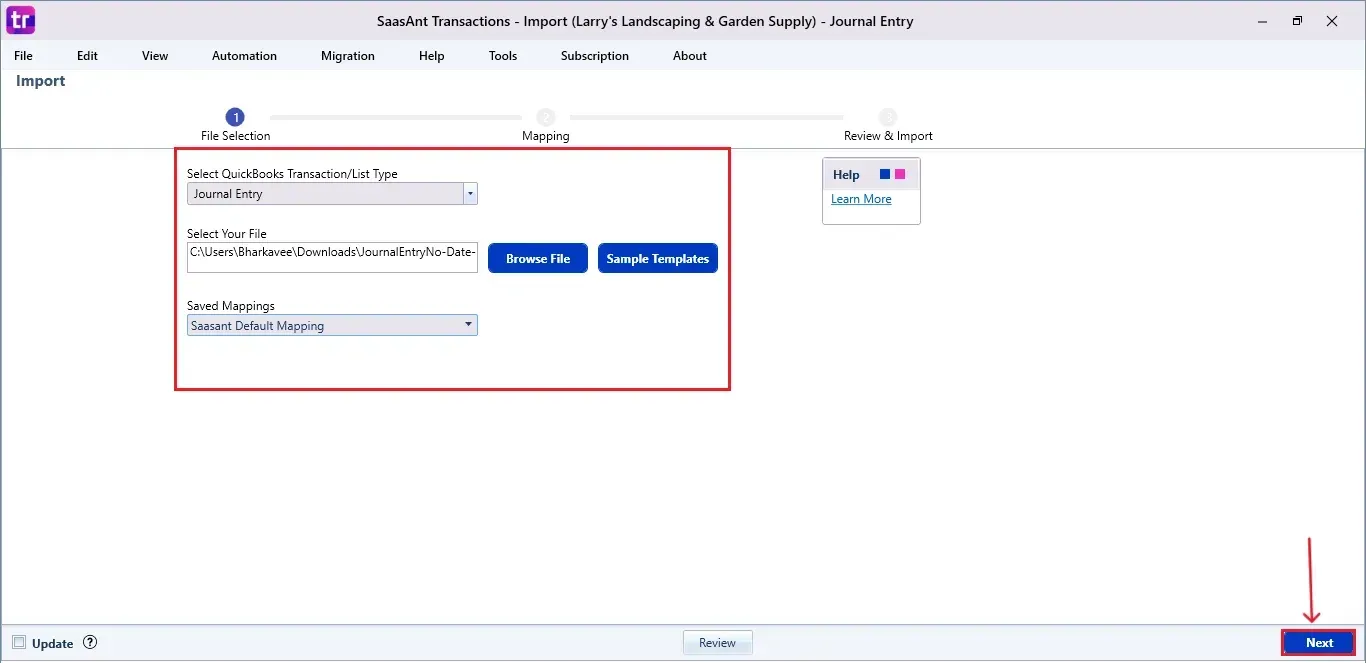
Step 5: Mapping Fields
Ensures the mapping of essential fields, including Invoice number, vendor name, transaction dates, and accounts.
Select “Next” at the bottom right of the dashboard.
This step ensures that your data is aligned with QuickBooks’ fields, including vendor name, Invoice date, due date, Invoice number, item details, and amounts.
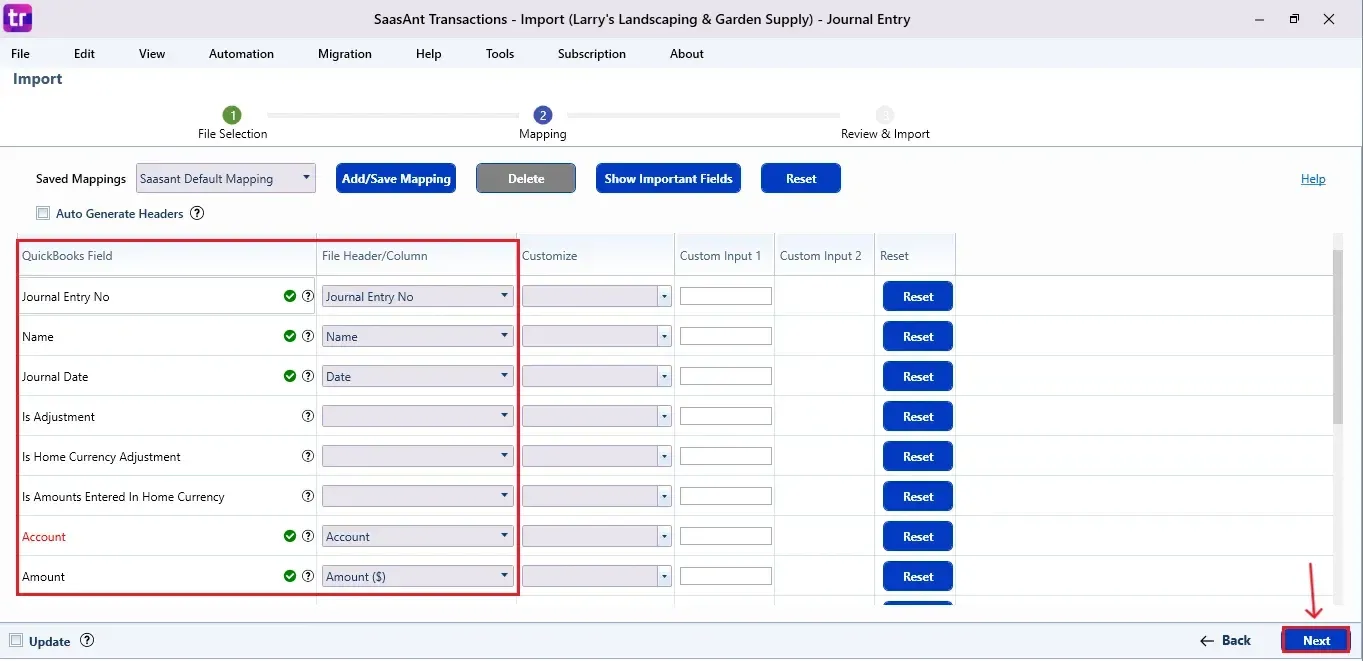
Step 6: Review & Pre-Edit the Data
Before importing, SaasAnt allows you to preview and edit the Invoice data directly within the interface.

The image below shows that the invoice dates are edited.
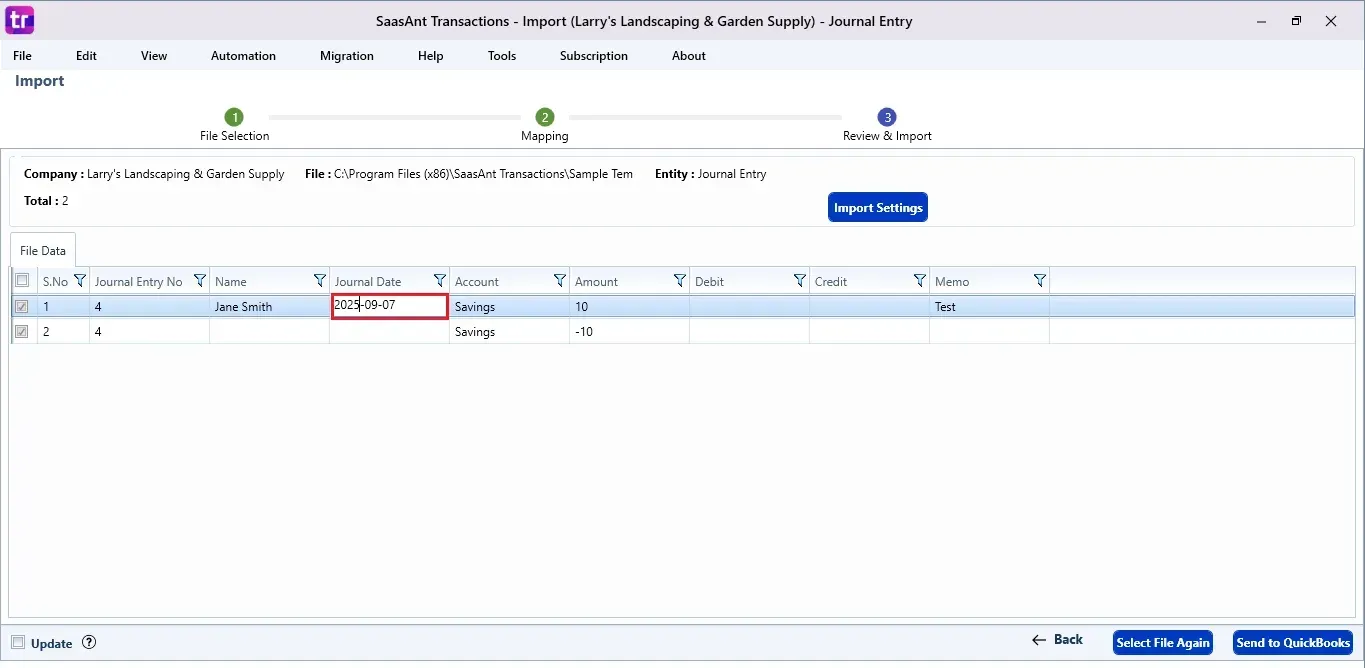
Step 7: Edit and Send to QuickBooks
Now, select and edit the dates of the Journal Entry and click the “Send to QuickBooks” option at the bottom right of the dashboard, as shown in the image below.
SaasAnt will now push the edited Invoice data into your connected QuickBooks Desktop account.
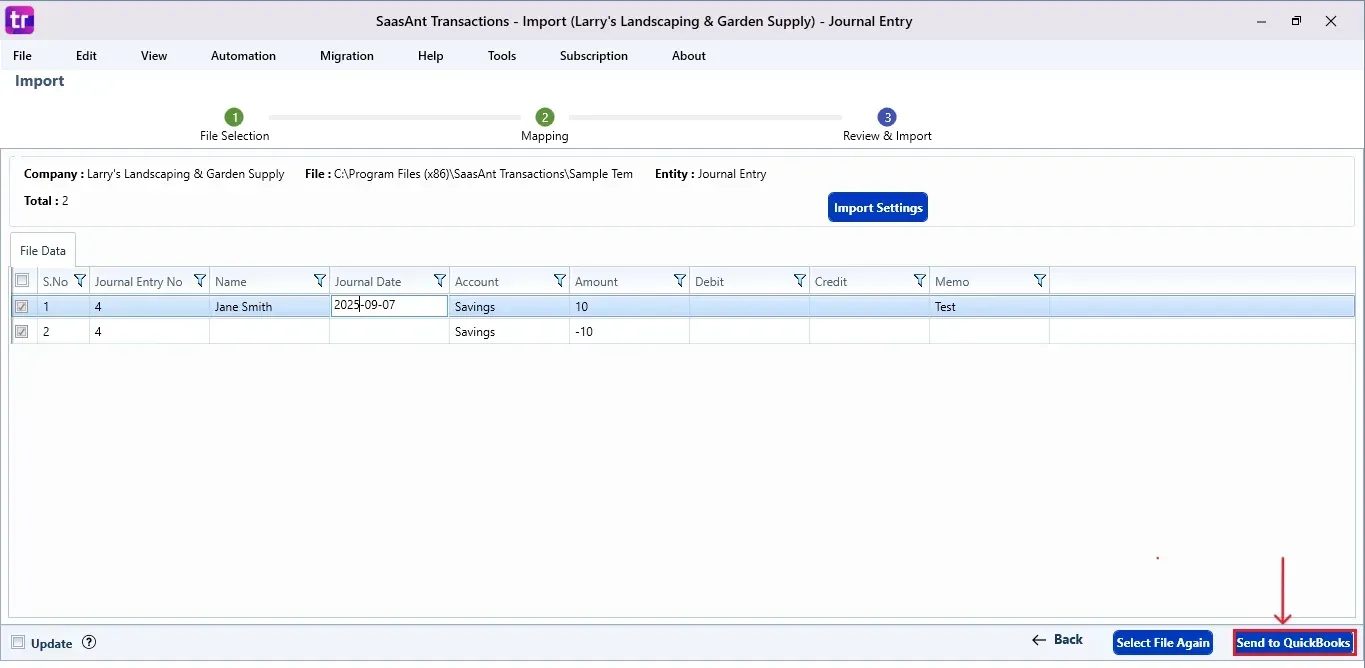
Step 8: Import the Data
The edited dates of the Journal Entry are reflected in the dashboard.
At the bottom right, click the “More” dropdown and select the option to download your edited Journal Entries for reference.
Download the mapping file separately (optional but recommended).
Additionally, next to the download option, you can see “Undo”, which allows you to roll back your “Invoice” data.
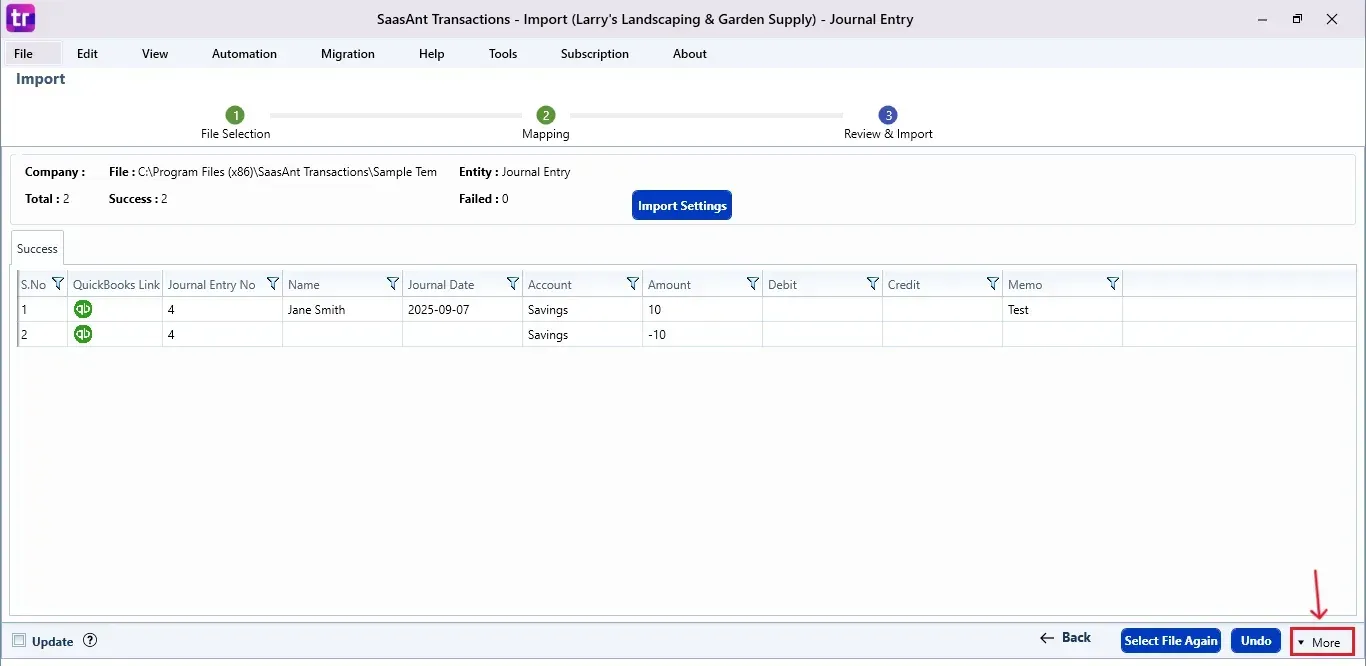
Step 9: Verify in QuickBooks Desktop
Open QuickBooks Desktop, go to the “Customers” menu, and select “Customer Centre”.
Search for the customer whose Invoice you edited to view the updated Invoice with your changes.

This final step ensures that your data is accurate and reconciled properly within QuickBooks.
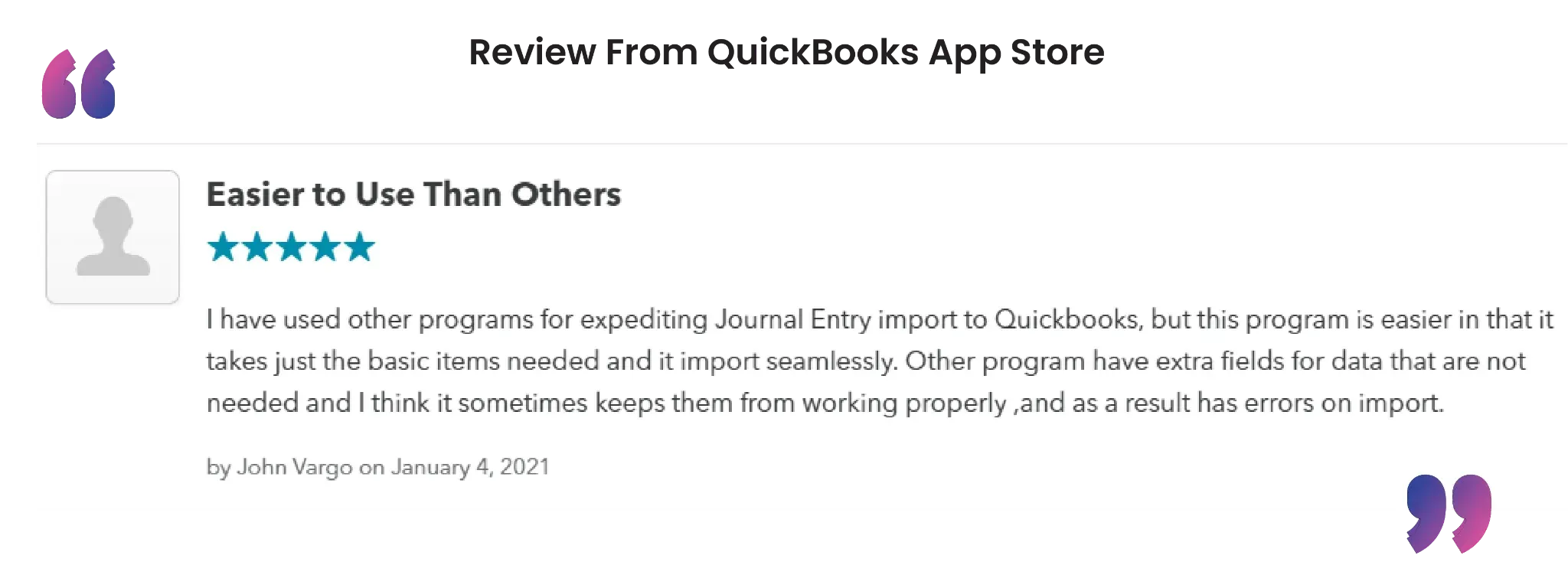
Wrap Up
Editing journal entries doesn’t have to be tedious. With SaasAnt Transactions Desktop, you save time, reduce errors by allowing bulk modifications, pre-import validations, and easy rollbacks. Whether you're fixing historical data or updating current entries, SaasAnt simplifies the task of maintaining clean and compliant QuickBooks Desktop records.
By leveraging trustworthy platforms like QuickBooks for your accounting processes and SaasAnt for transaction management and automation, you can enhance the overall workflow, minimize errors, save time, and acquire greater financial insight.
Want to optimize your editing workflow? Try SaasAnt Transactions Desktop today and experience the difference.
If you have inquiries regarding our products, features, trial, or pricing, or if you require a personalized demo, contact our team today. We are ready to help you find the ideal solution for your QuickBooks workflow.
Frequently Asked Questions
1) Will my original entries be overwritten when I edit journal entries using SaasAnt?
Yes, SaasAnt updates the existing entries with the new data from your imported file.
2) Can I undo journal entry changes after importing?
Yes, SaasAnt has an "Undo" option to roll back recent imports and restore previous changes if necessary.
3) Is field mapping necessary every time I import a file?
Not always. You can save a mapping template once and use it again for similar file structures.
4) Can I edit the memo or description in journal entries?
Yes, fields like memo, account, amount, and date can all be edited via the import file.
Read Also
How To Edit Invoice In QuickBooks Desktop
How To Edit A Bill In QuickBooks Desktop
How to Edit Vendor Credits in QuickBooks Online?
Import Trial Balance Into QuickBooks Online
How To Edit Time Activity In QuickBooks Online
How to Export Journal Entries From QuickBooks Online